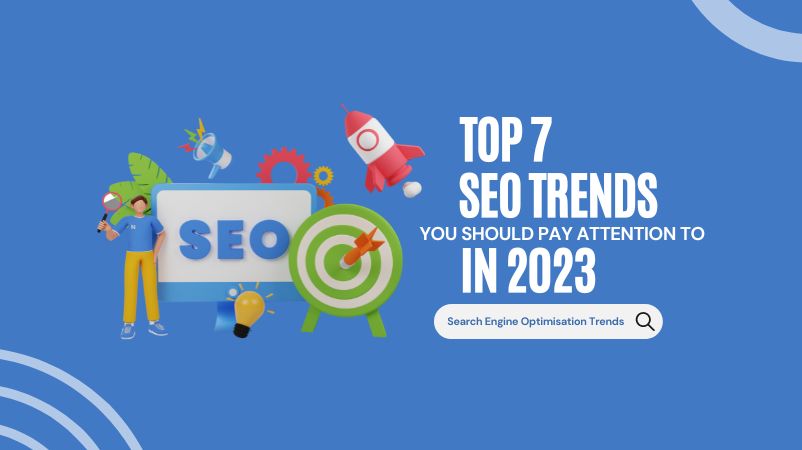
Businesses have taken to digital marketing like fish to water, which is a good comparison because a business can’t survive without it.
With 5.16 billion people in total using the internet at the start of 2024 and more coming online each year, digital marketing has a lot to offer.
All your business needs to do to get the most brand exposure and return on investment is to make and use a strong marketing plan.
Organic marketing in the form of Search Engine Optimization (SEO) still reigns supreme for those gains, with an SEO marketing service provider delivering the most benefits from the process.
Your business can make good inroads in terms of market penetration and lead generation, not to mention conversion rates, by adapting to the changing SEO trends that 2024 is said to bring.
They can be found in detail below for your reference so that you can make them a critical component of your company’s 2024 digital marketing strategy.
Top SEO Trends of 2024
According to the Hubspot State of Marketing Report for 2021, 71% of marketers thought that using strategic keywords was the best SEO strategy.
While keywords are still an essential part of SEO, they have to be supplemented by many other things that Google now considers necessary for ranking in its search algorithm.
1) Adding Experience To The Mix
Google has a simple rule by which it ranks content, called the EAT rule. It stands for expertise, authoritativeness, and trustworthiness.
Content that is high on these factors gets bumped up the rankings on Search Engine Results Pages (SERPs).
At the end of 2022, though, Google added another influential factor to this trio: experience. The resulting new EEAT rule has changed the search and ranking dynamics of the search engine.
Now, Google checks to see if the content you’re publishing was written by a person who has experience in that domain.
It does this by looking at the name of the author or the company that is publishing it and checking their professional information or industry of operation. So, content written by those with experience on the topic gets ranked higher than content by those from a niche that’s different from the content’s topic.
This update to the algorithm was made with the idea that it will help keep the quality of content high.
Hence, your content creators being in the same field as the topics they are adding should be a priority.
2) Saying No To Automation-Generated Content
AI has made big strides in recent years, finding increasing use in content generation. ChatGPT is a great example of this because it can write things that look and sound like human writing.
But the technology relies on basically copying content from the web or regenerating it, not producing anything original the way a person does.
This hurts the credibility of an article, which is why Google has tried to get rid of as many of these AI-made articles as possible.
Your content will be ranked lower if it has been created by an AI. This is especially true if the content doesn’t have any information that says who wrote it. So, to avoid this downranking, your content should have the following:
- Author Bios: Communicating to the reader the content creator’s credentials and experience.
- An Author Page: When an author writes multiple pages of content for a website and you need to credit them all.
- Author’s Social Links: This helps Google recognize the authors and authenticate them via their social media accounts.
3) More Pro-Audience and Less Pro-Traffic Content
Companies have realized that digital marketing is important and have taken steps to add more blogs to their portfolios.
This is both a good and bad thing, with the latter outcome taking center stage due to the insistence on prioritizing traffic generation for the website.
This increase may have signaled Google’s algorithm to consider the site’s content to be more authoritative and rank it higher, but not anymore.
Google wants to stop sites from adding filler content just to get more traffic, since it doesn’t add anything of value to the audience.
Your blogs and web pages should only contain content that is relevant to the field you’re operating in.
If you’re unsure of what would and wouldn’t work for your site, then you can use a keyword search tool that can provide you with relevant search terms for your domain.
There may be some exceptions to this, like eCommerce businesses that sell products of different types.
If you want to better educate your audience about those products, then you can use specialized SEO services for eCommerce stores to get your content ranked high.
The experts there can provide their experience and expertise to improve your chances with Google’s new ranking rules.
4) Higher CTRs With Endless Scrolling
Mobile phones are the world’s preferred way to connect to the internet, and Google is well aware of this fact.
So, when it crawls the web, it gives more weight to content that is better suited for mobile devices. Google has also added “endless scrolling” to its SERPs to make searching on mobile devices easier.
This gets rid of individual pages listing a certain number of search results each, instead making the results appear as an endless list that users can scroll down continuously.
This change is similar to how websites have gone from having individual sections to being continuously scrollable on a single page.
This change has affected the click-through rates, with many links that aren’t at the top of the list getting clicks too. A SEMRush study has shown that only 25.8% of search results have garnered no clicks.
Hence, you can avoid practices like keyword stuffing just to get your content to rank high, and instead focus on adding value to the reader.
5) Product Page-Oriented SEO
This feature is a gift for eCommerce sellers. Google has attempted to promote long-form content through its search because it is more authoritative. This adversely impacted eCommerce SEO, as product page rankings took a hit without the long-form content.
Your product pages needn’t suffer the same fate as you can add more important product-related content to them, and Google’s search algorithm will pick it up.
Helpful things like drop-down menus, customer reviews, FAQs, etc. can boost your ranking chances.
Besides the usual set of information and product-based keywords, you should also consider adding content that answers your customer’s probable queries regarding product warranty, upgrades, shipping times and rates, etc.
The more information the page contains that makes a purchase likely, the more likely it is that Google will rank the page higher.
eCommerce SEO service providers can help you immensely here, as they will know exactly what to do to get your product pages featured on search pages and the shopping section.
6) Closer Ties Between Search and AI
Google and other search engines have been working on adding more AI to their search processes to provide more accurate and relevant results, besides performing background tasks like crawling.
A recent example of this is the BERT (Bidirectional Encoder Representations from Transformers) algorithm update.
BERT is special because it gives the algorithm the ability to pick up on the subtleties of the language used, like context, emotions, etc.
It gives Google the ability to look for content value through a more human-like conversational language approach.
This is in line with its previous improvements, like RankBrain. The more your content follows the rules of EEAT, the better it looks to BERT.
One way to make sure of this is to have links in the content piece from authors who know a lot about the subject.
If not, you could have an expert write that content for you. BERT compliance is also helped by making it easier for users to find content on your site by making it easier to navigate.
Thus, transparency regarding who is behind the content will help your pages rank highly.
7) More Images and Fewer Crawls
Instagram, Google Lens, and other such applications have pushed search more in the direction of images than plain text in recent years. And 2024 will emphasize this change in search trends even more.
Google’s crawlers can better notice your site if it has relevant images accompanying the text, especially with the right alt text and schema markup. Adding image metadata like the file name and source also helps.
This focus on image search will be important because Google has decided to reduce its power consumption and carbon footprint, and reducing the number of crawls is how it is going about it.
This change helps Google save on computing resources, thus saving power. It also means that your pages will get crawled less, meaning discovery takes a hit.
Recrawls will be most affected, though, so new changes to your website will take longer to get recognized. Therefore, you should optimize your site from the start.
Conclusion
Search engines are technologies that are always changing, adding new features to help users get the content they need. Google’s recent changes are set to make a big impact on how search fundamentally operates, and your business should be able to get on that bandwagon from the get-go to stay ahead of the competition and gain brand visibility. Professional SEO marketing service providers can greatly assist with this task due to their knowledge and experience. They can give your content the authority it needs to rank well, in addition to doing the usual SEO tasks. Your 2024 will look very different with these changes, pushing the boundaries of your operability further than ever before.

Factsinsight.com is a leading blog that focuses on creating high quality, interesting and useful content about technology. We are a group of experienced writers who know a lot about the world of tech and love to stay abreast of the latest trends and developments. Our aim is to give useful and real knowledge to our people.
